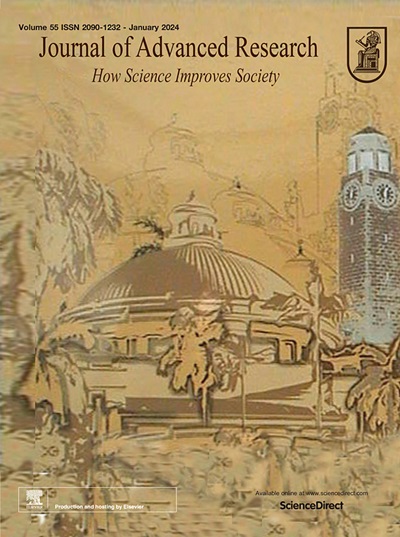Dual nature of type I interferon responses and feedback regulations by SOCS1 dictate malaria mortality
IF 13
1区 综合性期刊
Q1 MULTIDISCIPLINARY SCIENCES
引用次数: 0
Abstract
Introduction
Type I interferon (IFN-I, IFN-α/β), precisely controlled by multiple regulators, including suppressor of cytokine signaling 1 (SOCS1), is critical for host defense against pathogens. However, the impact of IFN-α/β on malaria parasite infections, beneficial or detrimental, remains controversial.
Objectives
The contradictory results are suspected to arise from differences in parasite species and host genetic backgrounds. To date, no prior study has employed a comparative approach utilizing two parasite models to investigate the underlying mechanisms of IFN-I response. Moreover, whether and how SOCS1 involves in the distinct IFN-α/β dynamics is still unclear.
Methods
Here we perform single-cell RNA sequencing analyses (scRNA-seq) to dissect the dynamics of IFN-α/β responses against P. yoelii 17XL (17XL) and P. berghei ANKA (PbANKA) infections; conduct flow cytometry analysis and functional depletion to identify key cellular players induced by IFN-I; and establish mathematical models to explore the mechanisms underlying the differential IFN-I dynamics regulated by SOCS1.
Results
17XL stimulates an early protective but insufficient toll-like receptor 7 (TLR7)-interferon regulatory factor 7 (IRF7)-dependent IFN-α/β response, resulting in CD11ahiCD49dhiCD4+ T cell activation to enhance anti-malarial immunity. On the contrary, a late IFN-α/β induction through toll-like receptor 9 (TLR9)-IRF7/ stimulator of interferon genes (STING)- interferon regulatory factor 3 (IRF3) dependent pathways expands programmed cell death protein 1 (PD-1)+CD8+ T cells and impairs host immunity during PbANKA infection. Furthermore, functional assay and mathematical modeling show that SOCS1 significantly suppresses IFN-α/β production via negative feedback and incoherent feed-forward loops (I1-FFL). Additionally, differential activation patterns of various transcriptional factors (TFs) synergistically regulate the distinct IFN-I responses.
Conclusion
This study reveals the dual functions of IFN-I in anti-malarial immunity: Early IFN-α/β enhances immune responses against Plasmodium infection by promoting CD11ahiCD49dhiCD4+ T cell, while late IFN-α/β suppresses these response by expanding PD-1+CD8+ T cells. Moreover, both the SOCS1-related network motifs and TFs activation patterns contribute to determine distinct dynamics of IFN-I responses. Hence, our findings suggest therapies targeting SOCS1- or TFs-regulated IFN-I dynamics could be an efficacious approach for preventing malaria and enhancing vaccine efficacy.

I 型干扰素反应的双重性质和 SOCS1 的反馈调节决定了疟疾的死亡率。
简介I型干扰素(IFN-I)受多种调节因子(包括细胞因子信号转导抑制因子1(SOCS1))的精确控制,对于宿主抵御病原体至关重要。然而,IFN-α/β 对疟原虫感染的影响是有益还是有害,仍然存在争议:这些相互矛盾的结果被怀疑是由于寄生虫种类和宿主遗传背景的差异造成的。迄今为止,还没有研究采用两种寄生虫模型进行比较的方法来研究 IFN-I 反应的内在机制。此外,SOCS1 是否以及如何参与了不同的 IFN-α/β 动态变化仍不清楚。方法:在此,我们进行了单细胞 RNA 测序分析(scRNA-seq),以剖析 IFN-α/β 对 P. yoelii 17XL (17XL) 和 P. berghei ANKA (P. berghei ANKA) 的反应动态。进行流式细胞术分析和功能耗竭,以确定 IFN-I 诱导的关键细胞角色;并建立数学模型,以探索 SOCS1 调节不同 IFN-I 动态的机制:结果:17XL刺激早期保护性但不充分的toll样受体7(TLR7)-干扰素调节因子7(IRF7)依赖性IFN-α/β反应,导致CD11ahiCD49dhiCD4+ T细胞活化,从而增强抗疟疾免疫力。相反,在 PbANKA 感染期间,通过收费样受体 9(TLR9)-IRF7/干扰素基因刺激器(STING)-干扰素调节因子 3(IRF3)依赖途径诱导的晚期 IFN-α/β 会扩大程序性细胞死亡蛋白 1(PD-1)+CD8+ T 细胞,损害宿主免疫力。此外,功能测试和数学建模显示,SOCS1 通过负反馈和不连贯前馈环(I1-FFL)显著抑制了 IFN-α/β 的产生。此外,各种转录因子(TFs)的不同激活模式协同调节了不同的 IFN-I 反应:本研究揭示了 IFN-I 在抗疟疾免疫中的双重功能:结论:该研究揭示了 IFN-I 在抗疟疾免疫中的双重功能:早期 IFN-α/β 通过促进 CD11ahiCD49dhiCD4+ T 细胞增强抗疟原虫感染的免疫反应,而晚期 IFN-α/β 则通过扩大 PD-1+CD8+ T 细胞抑制这些反应。此外,SOCS1 相关网络基序和 TFs 激活模式都有助于决定 IFN-I 反应的不同动态。因此,我们的研究结果表明,针对 SOCS1 或 TFs 调节的 IFN-I 动态的疗法可能是预防疟疾和提高疫苗疗效的有效方法。
本文章由计算机程序翻译,如有差异,请以英文原文为准。
求助全文
约1分钟内获得全文
求助全文
来源期刊

Journal of Advanced Research
Multidisciplinary-Multidisciplinary
CiteScore
21.60
自引率
0.90%
发文量
280
审稿时长
12 weeks
期刊介绍:
Journal of Advanced Research (J. Adv. Res.) is an applied/natural sciences, peer-reviewed journal that focuses on interdisciplinary research. The journal aims to contribute to applied research and knowledge worldwide through the publication of original and high-quality research articles in the fields of Medicine, Pharmaceutical Sciences, Dentistry, Physical Therapy, Veterinary Medicine, and Basic and Biological Sciences.
The following abstracting and indexing services cover the Journal of Advanced Research: PubMed/Medline, Essential Science Indicators, Web of Science, Scopus, PubMed Central, PubMed, Science Citation Index Expanded, Directory of Open Access Journals (DOAJ), and INSPEC.
 求助内容:
求助内容: 应助结果提醒方式:
应助结果提醒方式:


